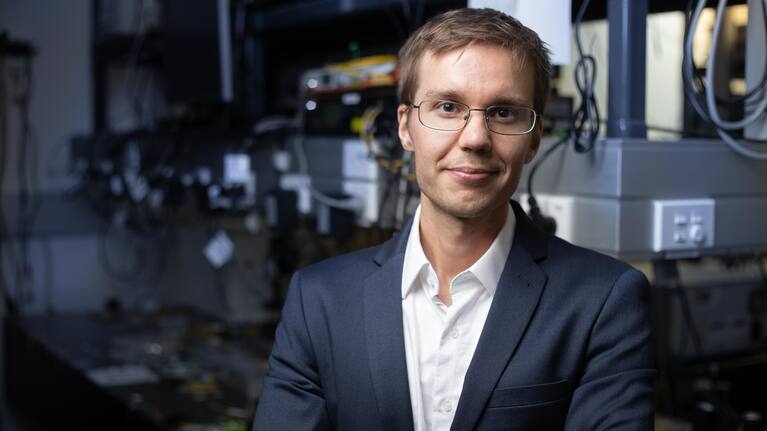New Kiwi-led research is poised to drive a giant leap forward in the development of technology that could contribute to creating faster internet and precision self-driving cars in the future.
The world-leading photonics research relates to "microresonator optical frequency combs" or "microcombs" which are an emerging technology with massive potential relating to the optics of how light behaves and what technologies light can be used for.
The collaborative effort was led by Associate Professor Miro Erkintalo, a senior lecturer at the University of Auckland and Principal Investigator at Te Whai Ao Dodd-Walls Centre, who told 1News it is "hard to even convey how important laser light is to our lives today".
"[Microcombs] have just proven extremely useful for a variety of things, and of course that's why they've become such a hot topic in my field," he said.
"I'm always cautious not to oversell things, but I honestly believe that these microresonator optical frequency combs will become very important in people's daily lives".
Erkintalo said the combs will be used in telecommunication systems to improve the speed of internet data through optical fibres and used to measure distances with pin-point accuracy extremely quickly "to hundreds of millions of measurements".
"I think this microcomb frequency technology will really become big, I mean it is already big in an academic context, but I think it's really going to infiltrate the mainstream as well."

Erkintalo, alongside his students, dreamt up the new theory of using two lasers to create different frequencies during the Covid-19 lockdown in 2020.
"I wasn't completely sure at the time that the theory would be possible to realise as an experiment. It seemed like some of the parameters would be quite difficult. So I wasn't optimistic," said Erkintalo.
A lab in the US picked up the paper before it was formally published in Nature Photonics and decided to give it a go in their lab — which was a total success on the first try.
"I was super surprised, I was just ridiculously surprised," Erkintalo laughed.
"What we now are going to really understand [is] how these combs are generated in practice. Because the reality is that it's so easy to do these experiments and it implies to me that we're missing something in the theory, because in theory it doesn't seem that easy."
Erkintalo said this new paradigm will provide "another tool in the toolkit" for advancing technology that uses precise distance tracking, like that required for self-driving cars.
"We have come up with a fundamentally new way of generating these frequency combs and we think that this might allow at least some of these applications of these frequency microcombs to be done better," he said.
He said before the theory can be used in practical applications, like honing technology in computers, more research needs to be conducted about what kind of characteristics the combs have.
"The main priorities for us, I think going forward, will be figuring out what are the characteristics of these combs, particularly when it comes to noise as that's going to be very important for us, because we have this idea that they would be better than the conventional systems".
Erkintalo said microcomb technology has become "one of the biggest areas of research in the field of laser physics" and that New Zealanders are leading the charge in this area.
"New Zealand is not a big country, but when it comes to laser science, we actually have quite a lot of skills and quite a lot of people doing it here, particularly in the micro frequency space".
"Our team in Auckland is one of the leading teams in terms of a big chunk of theories that people take for granted when simulating these theories and designing these systems come from Auckland."
He said most people do not understand how optics technology shows up in the world around them, highlighting the importance of leveraging light for the betterment of humanity and society.
"People would probably say lasers are just used for laser pointers and not much else, but they're so wrong in the sense that we won't have [the] internet if we didn't have lasers. We won't have any of the streaming services without the lasers, social media wouldn't exist without the lasers," he said.



















SHARE ME